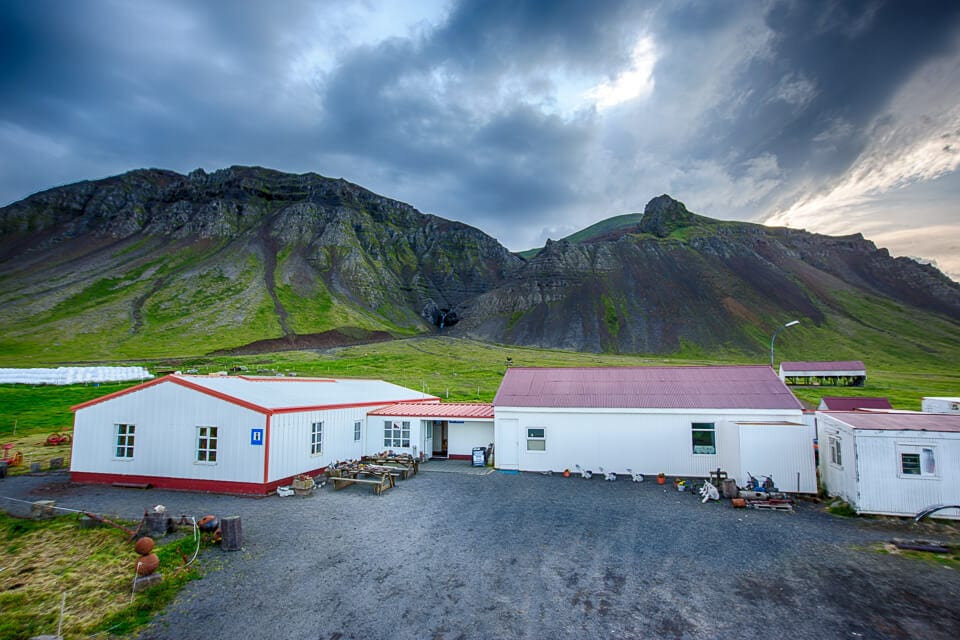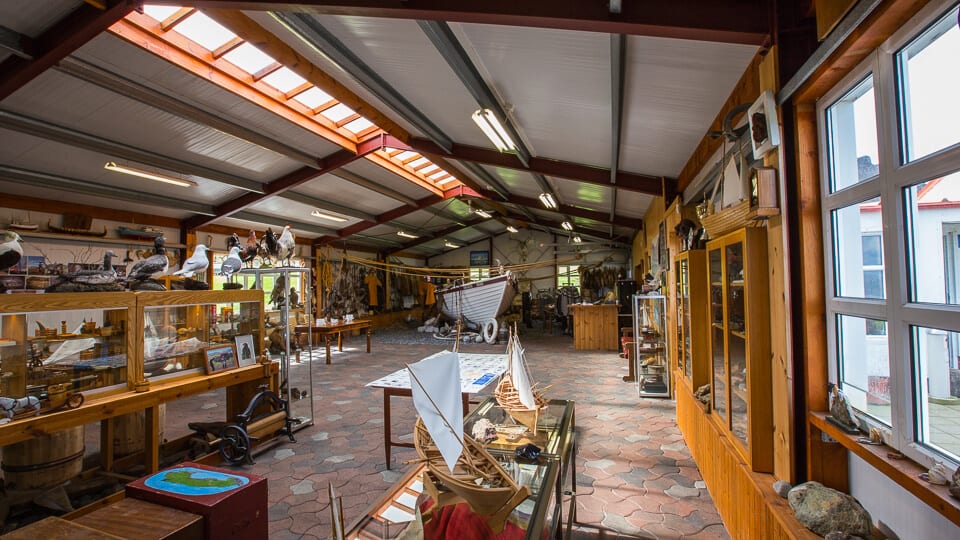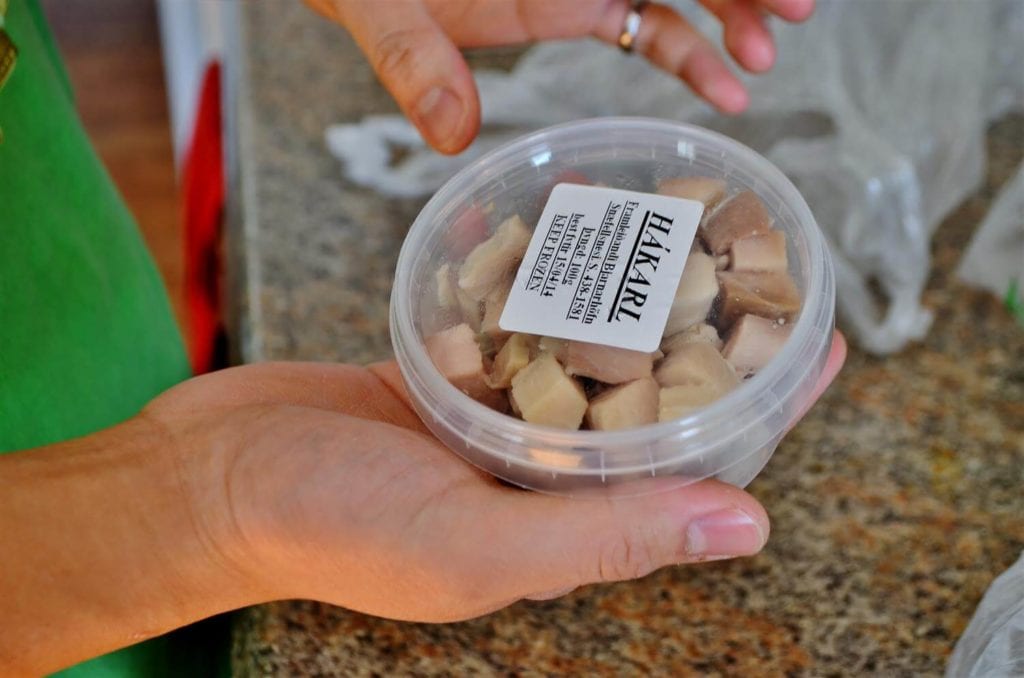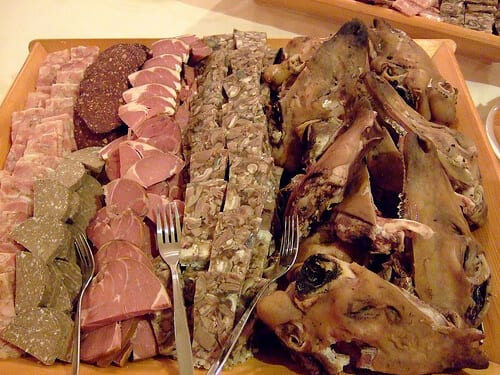Iceland is known for some weird food. Of all the things Icelanders pickle, stew, brew, and marinate, putrefied shark is most famous. Being the brave transplant-of-a-Viking that I am, I ventured to the Bjarnarhöfn Shark Museum on the Snæfellsnes peninsula to get up close and personal with this fine, fine food.
Bjarnarhöfn Shark Museum is located on a farm run by a single family for generations. You could say that the shark stank in their blood, or well, at least their baby food. It’s off road 54 between Stykkishólmur and Grundafjörður on the Snæfellsnes peninsula. If you don’t see the large shark sculpture at the turn, follow your nose. You should be able to get a wiff of the rotting shark from a few kilometres away.

I followed my nose, three times in fact. The first two times I went, I was traveling with some visitors who were not keen on trying shark. We stopped by the museum, rolled down the windows, and then promptly rolled them back up and drove away.

Luckily this go round I was traveling with a like minded viking woman, brave enough to “try anything once.” When we arrived, it was a quiet day at the museum and we were given a personal tour. Luck was in our favour because there was also a freshly caught greenland shark ready for butchering!
The host of the museum for the day, Hildibrandur, told us about the process. He’s a member of the family that has produced the shark for generations in this one location. Here’s how it goes down:
Step 1: Catch a shark.
Step 2 : Butcher the shark like you would a nice filet mignon. Pieces about 25 kilos each should do.
Step 3 : Cut a small hole in the skin of the shark pieces for hanging the flesh later.
Step 4 : Ferment in large wooden containers for at least 6 weeks to remove a large amount of the ammonia. Get all those pesky toxins drained out prior hanging. If it smells like pee, the fermentation is going well.
Step 5 : Once sufficiently rotten, hang the pieces of flesh by their skin on hooks in a seaside shack to cure, putrefy, and decay more.
Step 6 : Wait about 3-4 more months. Ask Hildibrandur, he says “it’s just like winemaking.”
Step 7 : Harvest, slice, and enjoy!
Just so you have an honest opinion, it’s really not as bad as it’s made out to be. Really, you will survive. You may actually enjoy it! I personally found the shark was better on the farm right off the hook than the samples I tried of jarred chunks. Ironically, it tastes better when it’s more “fresh.”

It pairs well with the small amount of rúgbrauð (Icelandic rye bread), given to you with the sample to help it go down. Many restaurants that offer this delicacy serve it with a shot of brennivín. After all, most locals only eat these ridiculous food during þorrablót, a pagan winter festival where they get absolutely hammered and dine on whey-pickled sheep’s testicles. How ever you might prefer your shark, I’m confident it would pair with a bunch of other ammonia-like foods.

Sound appealing? Are you ready to try rotten shark for yourself?
Pro tip # 1 : Wear the least amount of clothing you’re comfortable with into the museum and especially around the shark curing shack. You’ll thank me later.
Pro tip # 2 : If you choose to purchase this lovely product and store it in your Happy Campervan cooler, double bag it to the preventives odours from staying with you for the rest of your journey and the journey of the next happy camper.
Happy, rotten Camping!
Michael Ryan
Some of Michael’s other posts include:
Back